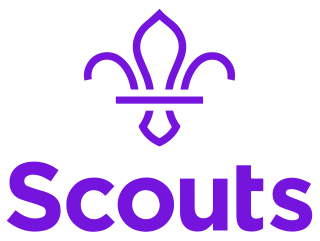
A Scout is a child, usually 10–18 years of age, participating in the worldwide Scouting movement. Because of the large age and development span, many Scouting associations have split this age group into a junior and a senior section. Scouts are organized into troops averaging 20–30 Scouts under the guidance of one or more Scout Leaders or Scoutmasters. Troops subdivide into patrols of about 6–8 Scouts and engage in outdoor and special interest activities. Troops may affiliate with local, national, and international organizations. Some national Scouting associations have special interest programs such as Air Scouts, Sea Scouts, outdoor high adventure, Scouting bands, and rider Scouts.

The Boys' Brigade (BB) is an international interdenominational Christian youth organisation, conceived by the Scottish businessman Sir William Alexander Smith to combine drill and fun activities with Christian values. Following its inception in Glasgow in 1883 the BB quickly spread across the United Kingdom, becoming a worldwide organisation by the early 1890s. As of 2018, the Boys' Brigade claimed 750,000 members in 60 countries.

The Baden-Powell Scouts' Association (B-PSA) is a worldwide youth organisation originating in the United Kingdom, with friendly relationships with similar traditional scouting organisations in various countries. Baden-Powell Scouting focuses on the importance of tradition in the scout movement.

The Scout Association is the largest Scouting organisation in the United Kingdom and is the World Organization of the Scout Movement's recognised member for the United Kingdom. Following the origin of Scouting in 1907, the association was formed in 1910 and incorporated in 1912 by a royal charter under its previous name of The Boy Scouts Association.

Sea Scouts is a program of the Boy Scouts of America for young men and women ages 14 through 20.

Explorer Scouts, frequently shortened to Explorers, is the fifth section of The Scout Association in the United Kingdom for 14- to 18-year-olds. The section was introduced in 2001 and formally launched in February 2002, alongside Scout Network, to replace the former Venture Scout section for fifteen-and-a-half to twenty-year-olds.

Scouts South Africa is the World Organization of the Scout Movement (WOSM) recognised Scout association in South Africa. Scouting began in the United Kingdom in 1907 through the efforts of Robert Baden-Powell and rapidly spread to South Africa, with the first Scout troops appearing in 1908. South Africa has contributed many traditions and symbols to World Scouting.

The uniform and insignia of the Boy Scouts of America (BSA) gives a Scout visibility and creates a level of identity within both the unit and the community. The uniform is used to promote equality while showing individual achievement. While all uniforms are similar in basic design, they do vary in color and detail to identify the different membership divisions of Cub Scouting, Scouts BSA and Venturing. Many people collect BSA insignia such as camporee and jamboree emblems, council shoulder strips and historical badges.

Girlguiding is the operating name of The Guide Association, previously named The Girl Guides Association. It is the national guiding organisation of the United Kingdom. It is the UK's largest girl-only youth organisation. Girlguiding is a charitable organisation.

Rover Scouts, Rovers, Rover Scouting or Rovering is a program associated with some Scouting organizations for adult men and women. A group of Rovers is called a 'Rover Crew'.

The Scout Network is the sixth and final youth section of The Scout Association in the United Kingdom, catering for those aged between 18 and 25 years. The section was formally introduced in February 2002 alongside Explorer Scouts with both replacing the former Venture Scouts section for fifteen-and-a-half- to twenty-year-olds.

Scouting in Northern Ireland is represented by three Scouting associations. The Scouts NI is part of The Scout Association of the United Kingdom, which is the World Organization of the Scout Movement (WOSM) recognized Scouting association in the United Kingdom. Scouting Ireland is the national Scouting association and the WOSM-recognized Scouting association for the Republic of Ireland, although its membership extends to Northern Ireland, supported professionally by the Scout Foundation NI (SFNI). The Baden-Powell Scouts' Association is a member of the World Federation of Independent Scouts and operates one group in Northern Ireland.

Scouts, often referred to as the Scout section to differentiate itself from the wider movement and its parent organisation, is a section of Scouting run by The Scout Association for ten and a half to fourteen year old young people. The section follows on from Cub Scouts and precedes Explorer Scouts. Since 1991, the section has been coeducational and today the Scout section accepts young people from all backgrounds, faiths and genders.
Beaver Scouts, often shortened to Beavers, is the second youngest official section of Scouting operated by The Scout Association in the United Kingdom. The core age range for Beaver Scouts is six to eight years. Sections of Beaver Scouts are known as Colonies and are run locally by Scout Groups. After reaching the age of eight, a Beaver Scout will then move on to Cub Scouts. The section officially launched in 1986 but had existed before this as trial and unofficial sections as far back as 1963.

The Pathfinder & Rover Explorer Scouts' Association (P-RESA) is an independent Traditional Scouting Association in the United Kingdom, with International branches. The Association's training programme runs along the lines of Baden-Powell's original Scouting for Boys, upholding the traditions and practices set out by B-P, using the 1938 Boy Scouts' Association Policy Organisation & Rules (POR) as its basis.
Cub Scouts is the section of Scouts Australia for boys and girls aged 8 to 11 (inclusive), often known simply as 'Cubs'. The Cub Scout section follows after Joey Scouts and is before Scouts. Cub Scouts wear a uniform shirt with navy blue panels, and yellow shoulders.

Cub Scouts, often shortened to Cubs, are a section of Scouting operated by The Scout Association with a core age of eight to ten and a half years of age. This section follows on from the Beaver Scouts and precedes the Scout section.

The Scout Association's Sea Scouts are a branch of the association dedicated to boating and water-based activities such as sailing, canoeing, motorboating and water navigation. The association approved a special uniform for Sea Scouts in 1910 and, in 1912, the association formally adopted use of the name "Sea Scouts". Specialist Sea Scout troops have existed ever since. They are usually based by the side of water, either the sea, lake, river or canal.

Young Leaders are Explorer Scouts who choose to provide leadership in Squirrel Scout Dreys, Beaver Scout Colonies, Cub Scout Packs or Scout Troops alongside adult volunteers as a part of the leadership team. Training of Young Leaders is achieved through eleven lettered modules covering the necessary skills to play an active part of the leadership team, with members challenged to apply what they have learned through four 'missions' in their sections.

Air Scouts are a branch of The Scout Association in the United Kingdom dedicated to flying and aeronautical activities such as air navigation, identification, flying and gliding. The branch were first formed in 1941 although air activities had been a part of the Scout programme in the UK since 1911. They can be located anywhere but are usually located within easy transport distance of an airfield.

















